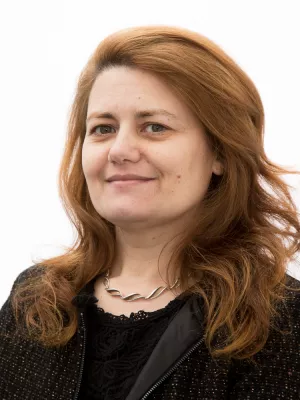
Ana Nordberg
Senior lecturer

Medical methods and Patentability of Nanomedicine in Europe: small matter, large interrogations
Author
Summary, in English
The present article was presented at the ATRIP Congress 2015. The main question addressed is whether reinterpretation, reformulation or replacement of Article 53 (c) of the European Patent Convention is viable and advisable. The issue is addressed by reference to both novel and resurfacing interpretative concerns connected with emerging technologies exemplified by nanomedicine, but also considering known interpretative issues, traditional objections and sustaining arguments concerning this provision. The debate concerning the patentability of ‘medical methods’ is multi-layered and complex. Article 53 (c) EPC is a public policy mechanism, intended to introduce flexibility in the patent system allowing the protection a core ethical value of society: the right to the highest attainable standard of health and more specifically the right of access to healthcare. However a balance needs to be struck with the need to preserve adequate levels of incentive to innovation in medical technologies. Nanotechnology inventions blur the lines between patentable subject matter and what may fall under the exception from patentability. It is a good example of how in recent years, emerging technologies have been challenging the patent system and exposing the need for re-thinking the adopted solutions.The analysis is made centered in European Patent law, however many jurisdictions have adopted similar legal provisions and face similar policy debates. For this reason, the issues debated are to some extent global. Every nation, arguably to a different extent, faces the issue of ensuring the protection and promotion of public health and wide access to medicine. In the current times of financial troubles it has become apparent that the traditional North/South division is a simplistic view: there are many ‘Souths’ in the North, while ‘Norths’ are merging in the South. Even if challenges are different from country to country and region to region, the same difficulties are faced by health authorities and families: resources are scarce, and the cost of (patented) medical technology is continuously increasing. On the other side, innovation is no longer a privilege of the North: investment in nanotechnology has been a global phenomenon, been seen as a way to close the technological gap and a highway for development. Protection of such investment in innovation is a growing necessity. The presented conclusions were based on the study of (1) the basic foundations of the norm,(2) the justifications for patent rights and how exceptions to such rights fit within the system; (3) the interpretative construction of the norm and its application in the praxis of the EPO; (4) The different approach chosen by the USA patent legislator to integrate similar policy considerations; (5) the specificity of emerging medical nanotechnology and how these conflict with the operative concepts used in patent law.
Department/s
- Human Rights Law
- Health Law
Publishing year
2016-06
Language
English
Publication/Series
Intellectual Property in Action in Society : New perspectives from the North, the South and the Cloud
Document type
Book chapter
Publisher
Edward Elgar Publishing
Topic
- Law
Keywords
- Law
- Rättsvetenskap
Status
Inpress
Research group
- Human Rights Law
- Health Law